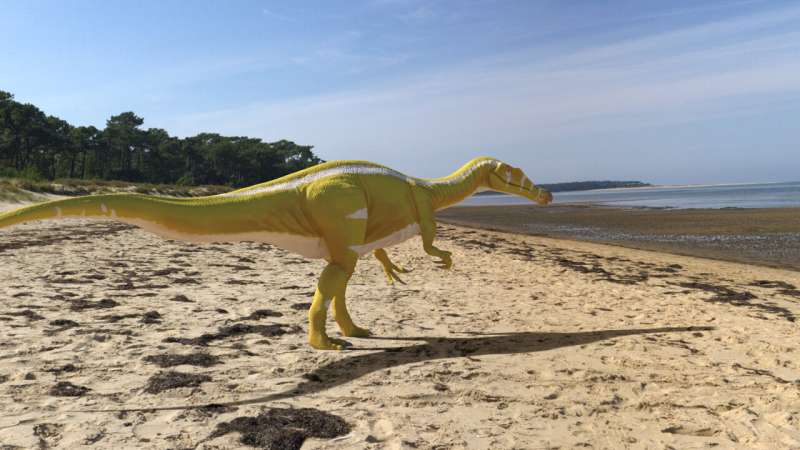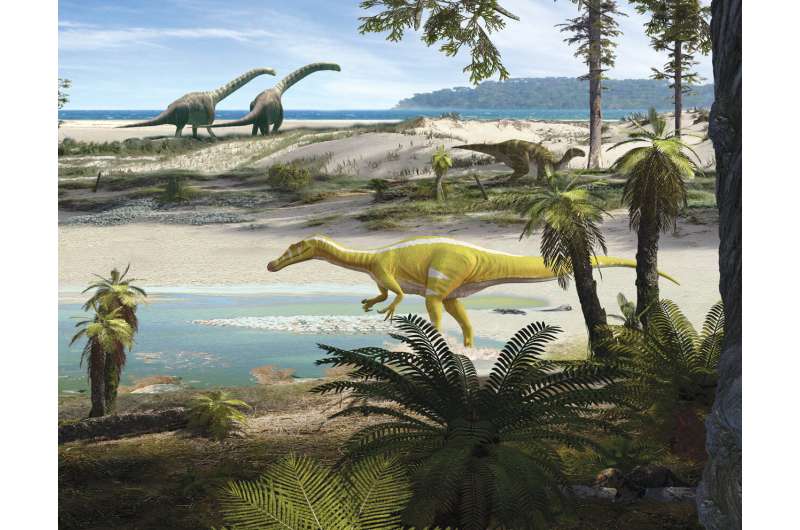This article has been reviewed according to Science X's editorial process and policies. Editors have highlighted the following attributes while ensuring the content's credibility:
fact-checked
peer-reviewed publication
trusted source
proofread
Fossil fragments shed light on a new spinosaurid dinosaur found in Spain

A dinosaur specimen from Castellón, Spain represents a new proposed species of spinosaurid, reports a paper published in Scientific Reports. The identification of a potential new species suggests that the Iberian peninsula may have been a diverse area for medium-to-large bodied spinosaurid dinosaurs and sheds light on the origin and evolution of spinosaurids.
Spinosaurids comprise of different groups of dinosaurs that are often large, stand on two feet, and are carnivorous. Well-known examples of spinosaurids include Spinosaurus and Baryonyx. It is thought that spinosaurids may have originated in Europe and then migrated to Africa and Asia, but evidence of their existence in Spain is mostly based on fossilized tooth remains.
Andrés Santos‑Cubedo and colleagues analyzed fossil fragments (a right jaw bone, one tooth and five vertebrae) discovered previously in the Arcillas de Morella Formation in Spain and dated to the late Barremian, Early Cretaceous period (between 127 and 126 million years ago). Based on the remains the authors estimate that the specimen is around 10 to 11 meters long. They compared the specimen to data on other spinosaurids to determine its evolutionary relationship to other species.

Based on a comparative analysis of the specimen with other spinosaurids, the authors identified the specimen as both a new species and a new genus of spinosaurid and named it Protathlitis cinctorrensis. The authors named the genus Protathlitis meaning "champion" in Greek and used cinctorrensis in the species name to reference the town—Cinctorres—in which the specimen was uncovered.
The authors propose that this new species may indicate that spinosaurids appeared during the Early Cretaceous in Laurasia—a large area of land in the northern hemisphere—with two sub-groups of species occupying western Europe. The spinosaurids may have later migrated to Africa and Asia where they diversified. In Europe, baryonychines like Protathlitis were dominant, while in Africa, spinosaurines like Spinosaurus were most abundant.

More information: Andrés Santos-Cubedo, A new spinosaurid dinosaur species from the Early Cretaceous of Cinctorres (Spain), Scientific Reports (2023). DOI: 10.1038/s41598-023-33418-2. www.nature.com/articles/s41598-023-33418-2
Journal information: Scientific Reports
Provided by Nature Publishing Group





















